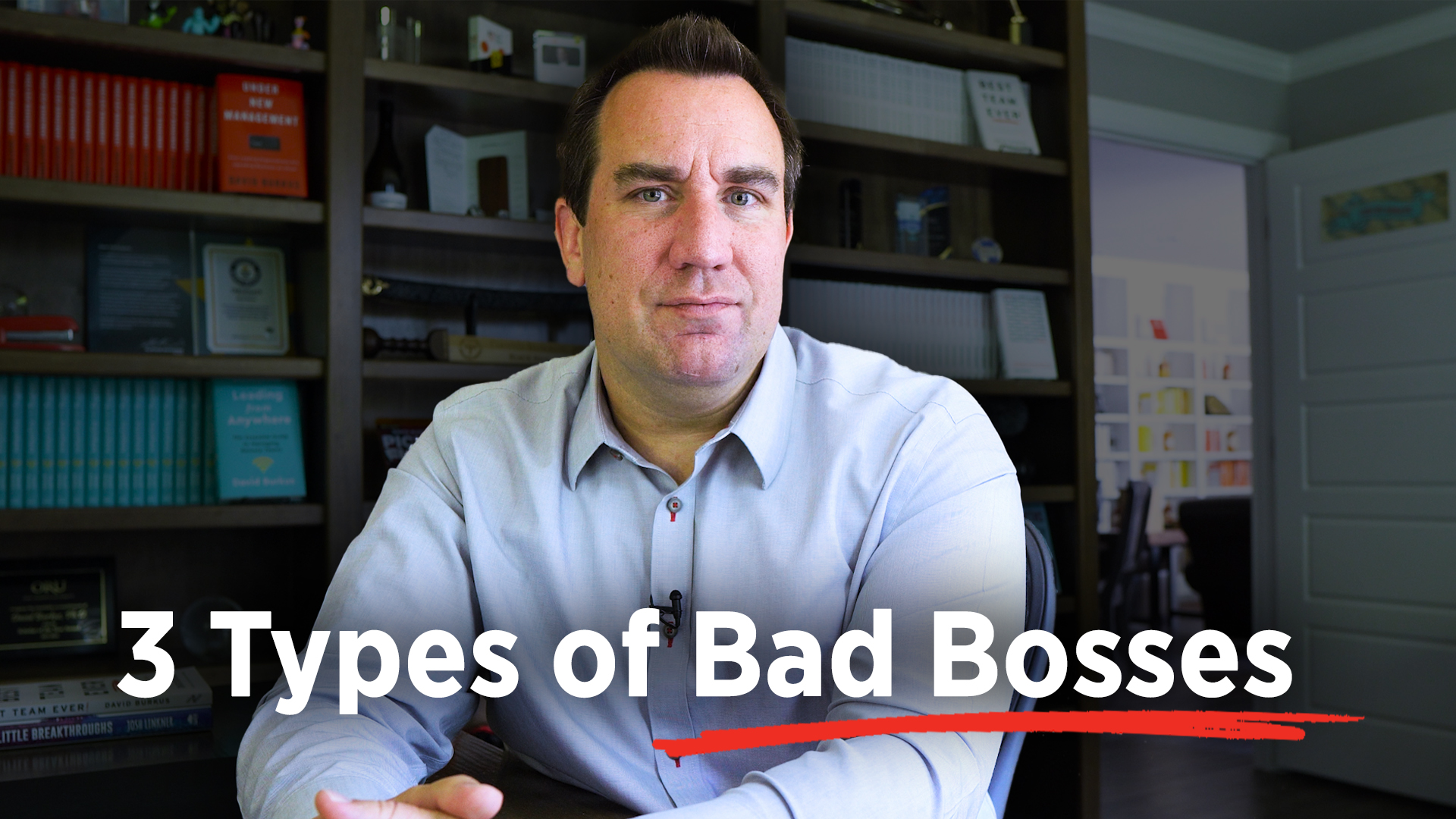
It’s a situation no one wants to be in but far too many professionals face: You’re stuck working for a bad boss. Maybe it started with broken promises. Maybe it’s the micromanagement. Or maybe it’s that creeping feeling that your manager isn’t really on your team, even though they’re supposed to be leading it. Whatever the reason, trust is gone—and when trust breaks down between you and your boss, your work, your well-being, and your career trajectory are all at risk.
So, what do you do when you’re dealing with a bad boss—but still want to do your best work?
What Not To Do When You Have Bad Boss
When trust erodes in any relationship—especially with a bad boss—people tend to react in predictable but unproductive ways. They shut down. Or they lash out. They withdraw, start mentally checking out from meetings, slow-roll projects, or they get confrontational, short, even passive-aggressive. Neither strategy solves the problem. And more importantly, neither helps your performance or your long-term prospects.
When your boss breaks your trust, the natural instinct is to protect yourself. But reacting emotionally might end up hurting you more than it helps. If the goal is to do your best work and protect your reputation, even while working under poor leadership, you need a more strategic approach.
You Can’t Change Them—But You Can Start a Conversation
Let’s get one thing out of the way: You can’t force a bad boss to become a great one. But you can open the door to a more productive relationship. It starts with a conversation—yes, even if they’re the one who broke your trust.
Think of it like this: you’re not trying to confront them. You’re inviting them into clarity.
Say things like:
• “I want to make sure I understand your priorities. What should I be focusing on?”
• “What challenges are you facing that the team can help support?”
• “I’d love to make sure our efforts are aligned with your expectations. Can we talk about that?”
Each of these statements is non-confrontational but invites accountability. You’re not calling them out. You’re calling them in. And while you may not get instant change, you’ll get insight. Maybe even enough to repair the trust. Or, if they shut it down completely, you’ll have your answer about what to do next.
Different Types of Bad Bosses, Different Tactics
Not all bad bosses are bad in the same way. Some hover. Some disappear. Others explode. And each kind of broken leadership requires a different approach to managing up.
The Micromanager
These bosses are driven by anxiety. They want control; so, they control everything. The trick isn’t to fight for freedom. It’s to remove their anxiety before it starts.
Send proactive updates. Break big projects into small milestones. Use Slack, email, dashboards—whatever it takes to keep them informed without being asked. If you can show them, you’re on top of things consistently, their need to hover may start to fade.
The Ghost
This boss is missing in action. Maybe they’re overwhelmed. Maybe they’ve checked out. Either way, they’re not advocating for you. You’ll need to advocate for yourself.
Set your own goals. Make your wins visible. Pitch your own projects. Present solutions instead of asking for permission. You’re not trying to take over—you’re trying to make them look good with the least amount of effort. It may not be fair. But it may be the only way to get things moving.
The Volcano
These leaders lead with emotion—often erratic emotion. One day you’re praised, the next you’re in the blast zone. You can’t fix that. But you can neutralize it.
Stick to facts. Clear timelines, clear deliverables. Don’t personalize their outbursts—it’s about them, not you. Document everything and keep a paper trail in case you need to escalate. Most of all, don’t get pulled into their chaos. Stay professional and stay centered.
These strategies aren’t about enabling bad behavior. They’re about surviving a bad boss—and doing your best work anyway.
When You Can’t Trust Up, Build Across
If you’ve tried all of this and still can’t rebuild trust with your bad boss, there’s still one more move. You start building relationships across the organization.
Instead of leaning up into leadership that’s not there, start building trust with your peers. On your team and across departments. Find the people who can help you get work done, develop your skills, and keep momentum going. Ask to shadow someone. Collaborate cross-functionally. Get known outside your direct chain of command.
When you build connections across the organizations, and even outside of it, you open yourself up opportunities your boss wouldn’t present—opportunities for supports but also opportunities to find a new team. Sometimes the best way to manage up…is to start building across.
And Sometimes, You Leave
Let’s be honest. Sometimes, no matter what you do, the relationship won’t heal. You’ve tried conversations. You’ve adjusted your tactics. You’ve built sideways. But nothing’s changed.
If that’s you, it might be time to leave.
That’s not failure. That’s growth. You don’t owe loyalty to a bad boss who doesn’t support you. You owe it to yourself to find a place where you can thrive—on a team where trust isn’t something you have to fight for, but something that’s baked in from day one.
Yes, it’s risky. Yes, you should be smart about the timing. But in the long run, very few people regret leaving a toxic boss. What they regret is staying too long.
The Bottom Line on Dealing with a Bad Boss
Trust isn’t a bonus in the workplace—it’s the baseline. And when a bad boss breaks it, everything suffers. But that doesn’t mean you’re powerless. Whether you’re repairing trust, working around it, or walking away from it, you still have agency. You still have choices.
And most importantly, you still can do your best work—even when your boss isn’t doing theirs.

About the author
David Burkus is an organizational psychologist, keynote speaker, and bestselling author of five books on leadership and teamwork.